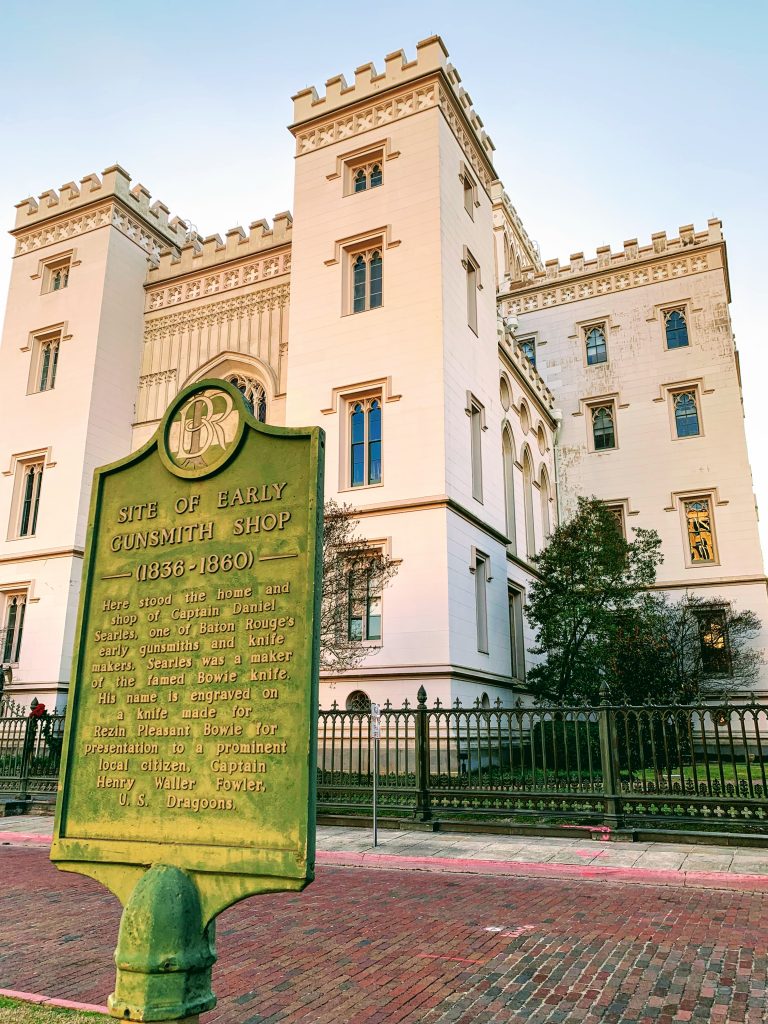This site is indeed to be a fun look at Baton Rouge’s storied past. Baton Rouge has been inhabited under seven eight flags (if one includes the First Nations people that lived here prior to European colonization), and there are plenty of stories to tell.
This blog really started on December 23, 2018, when my wife and I took a walk through downtown Baton Rouge. I stopped to read a historic plaque near the Old State Capitol, which is always dangerous.

Despite being an arms historian, I had never heard of Daniel Searles. Like all good historians, I plunged in and realized that there was a great story here. Searles was a knife maker of repute, and made one of the most historically important Bowie knives in the world—now held at the Alamo Museum.
But what really piqued my interest was Searles’ demise.
To the remark of one of his friends on Sunday last, that he appeared better; his answer was—”I am not better—do not want to be better, and shall die soon.” He had frequently said, “I will not be a burthen to my friends—when I get tired of dying, I mean to kill myself.”
Baton Rouge Tri-Weekly Gazette and Comet, 25 Mar 1860, page 3
His obituary included the following lurid details:
On Wednesday evening he shaved and dressed himself for the long sleep that knows no waking—the servant attending him was absent from the room when the fatal moment arrived. Placing himself in order for burial, the pistol in a brief second done the work. He placed the muzzle immediately below the ear, on the right side and the ball entered and lodged in his brain, producing almost instantaneous death—sufficient vitality was left him, however, under the resolution of his own iron nerves, to lay aside the pistol and cross his hands in death.
Baton Rouge Tri-Weekly Gazette and Comet, 25 Mar 1860, page 3
Even more mysterious was the mention in another obituary that Searles’ had purchased his marble gravestone (and his coffin) some years prior to his death. His grave was located in the “old American Cemetery,” which led to the next obvious question: where is Searles’ grave?
(Like too many good historical questions, I have only sort-of answered it.)
My pursuit to learn more about the old American Cemetery ultimately led to the creation of this blog.
Oh yeah, a bit about me. I’m a historian, writer and photographer, and sometimes an information technology person (to keep the bills paid).
Feel free to reach out at mike@mikehelms.org if you’d like!